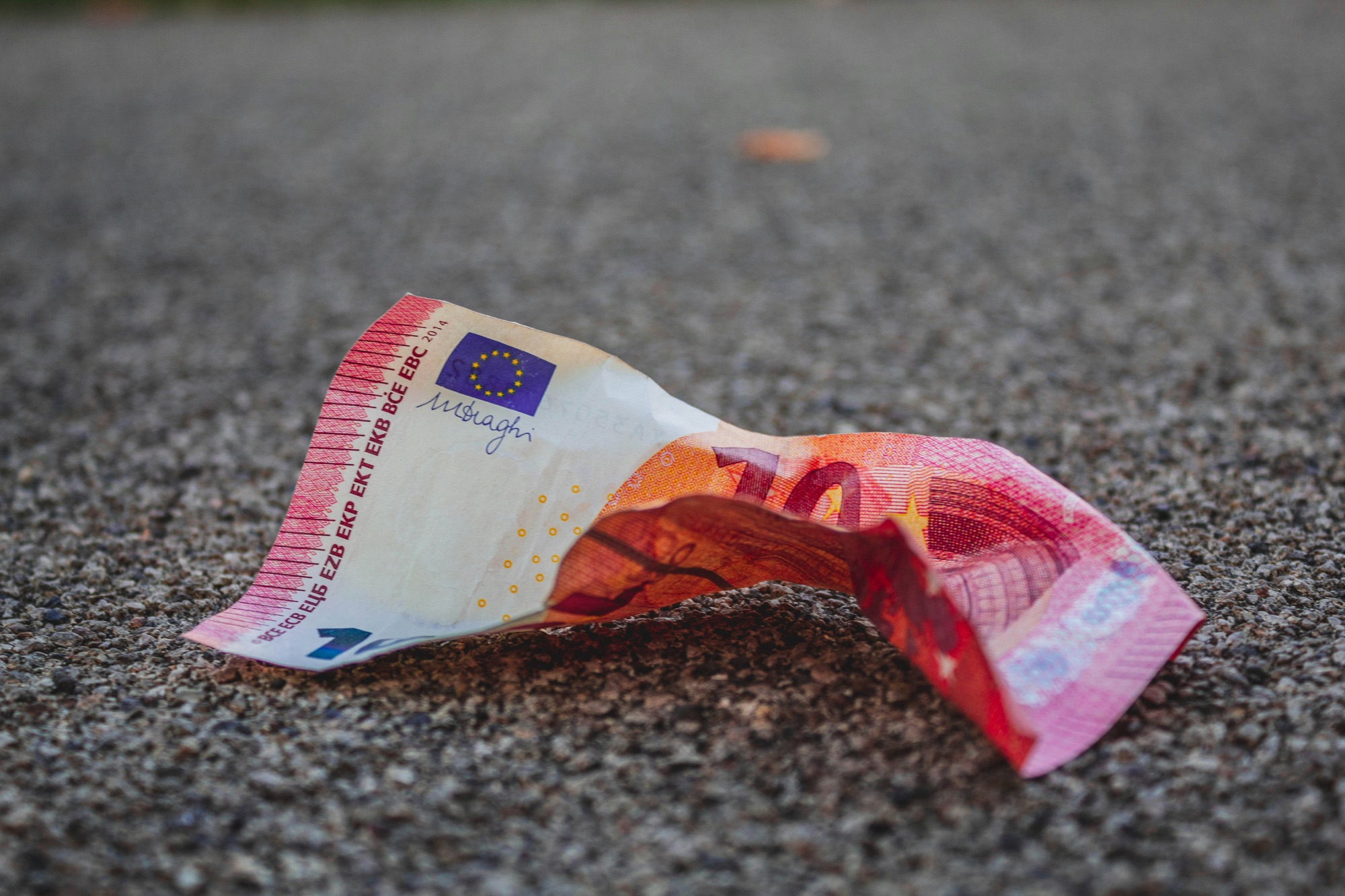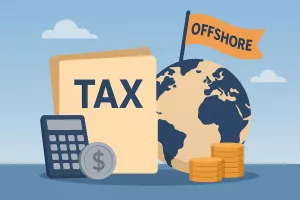Inflation and deflation are two economic forces that shape economies worldwide. Inflation, characterized by rising prices, often gets more attention and concern, as it directly impacts daily expenses. However, deflation, which involves a general decline in prices, can have far more severe consequences. While falling prices might seem beneficial at first glance, deflation poses significant risks to economic stability and growth. In this article, we’ll explore why deflation is often considered more damaging than inflation and delve into the factors that make deflation particularly challenging to manage.
Understanding Deflation and Inflation
What is Inflation?
Inflation occurs when the general price level of goods and services rises over time, decreasing the purchasing power of money. In simple terms, each dollar buys fewer goods than it did before. While excessive inflation can lead to economic instability (such as hyperinflation), moderate inflation is typically considered normal and even necessary for economic growth. Central banks, like the Federal Reserve, often target a low level of inflation (around 2% annually) as it promotes spending, investment, and wage growth.
- Example: In the 1970s, the U.S. experienced high inflation rates, sometimes exceeding 10% annually. This period, known as “stagflation,” highlighted the challenges of controlling inflation without stifling economic growth.
What is Deflation?
Deflation is the opposite of inflation, where prices decline over time. While falling prices might sound appealing, deflation often signals broader economic issues. Deflation typically occurs during periods of economic contraction, when demand falls, leading businesses to lower prices to attract customers. While deflation might provide short-term relief to consumers, it creates long-term problems for businesses, workers, and overall economic stability.
- Example: Japan’s deflationary period in the 1990s, known as the “Lost Decade,” resulted in stagnant economic growth despite various policy interventions.
The Economic Risks of Deflation
1. Reduced Consumer Spending and Economic Activity
One of the primary dangers of deflation is that it discourages consumer spending. When prices fall, consumers may delay purchases, anticipating that prices will drop further in the future. This “wait and see” approach leads to reduced demand, which forces businesses to cut back on production. Lower production levels can lead to layoffs, reduced wages, and even business closures. As businesses contract, the overall economy slows down, leading to a vicious cycle of falling demand and further deflation.
- Real-World Example: During the Great Depression, the U.S. saw a significant drop in consumer spending as people hoarded cash, expecting prices to continue falling. This behavior contributed to a prolonged economic downturn.
2. Increased Debt Burden
During deflationary periods, the real value of debt increases. This is because the money used to repay debts is worth more than when the debt was originally incurred. For both individuals and businesses, this makes debt more expensive in real terms, leading to financial strain. Households with significant debt may find it harder to meet their obligations, leading to higher rates of loan defaults and bankruptcies. For businesses, the increased burden of debt can result in reduced investments, layoffs, and financial insolvency.
- Tip: To mitigate the impact of deflation on debt, businesses and individuals should consider refinancing options to lock in lower interest rates before deflation takes hold.
3. Wage Stagnation and Rising Unemployment
Deflation puts downward pressure on wages. As businesses earn less revenue, they often resort to cost-cutting measures to stay afloat. One common strategy is to reduce wages. However, wages are often “sticky” downwards, meaning it is difficult to lower them without causing dissatisfaction or losing valuable employees. As a result, instead of cutting wages, businesses might opt for layoffs. Rising unemployment further reduces consumer spending, exacerbating the deflationary spiral.
- Case Study: In the 1990s, several Japanese companies faced the dilemma of cutting costs without reducing wages, leading to increased layoffs and part-time work.
4. Economic Contraction and Deflationary Spiral
Deflation can trigger a self-reinforcing cycle known as a deflationary spiral. As prices fall, businesses reduce investment, consumers cut back on spending, and unemployment rises. The combination of reduced demand and falling wages leads to even lower prices, perpetuating the cycle. Once this deflationary spiral sets in, it becomes incredibly challenging to break out of it, leading to prolonged economic stagnation and even depression.
- Historical Insight: The deflationary spiral during the Great Depression was exacerbated by a lack of consumer confidence and restrictive monetary policies, highlighting the need for proactive intervention.
5. Challenges for Monetary Policy and Central Banks
Deflation significantly limits the effectiveness of traditional monetary policy tools. Central banks typically lower interest rates to stimulate economic activity during recessions. However, when interest rates are already near zero, there is little room left to cut rates further (a situation known as the “zero lower bound”). Once interest rates hit zero, central banks lose their primary tool for boosting the economy, leading to a situation where even aggressive monetary stimulus fails to have the desired effect. This can trap an economy in a state of prolonged stagnation, as seen in Japan’s “lost decades.”
- Example: In response to deflationary pressures, the European Central Bank has implemented negative interest rates and other unconventional monetary policies to stimulate growth.
Deflation vs. Inflation: Why Deflation is More Dangerous
1. Inflation Can Be Managed, Deflation is Harder to Reverse
Moderate inflation can be managed through monetary policy adjustments, such as raising interest rates or reducing money supply. Central banks have well-established tools and frameworks for controlling inflation. In contrast, deflation is much harder to reverse. Once businesses and consumers fall into the deflationary mindset, they act in ways that perpetuate the downward spiral, making it difficult for policymakers to reverse course.
- Practical Advice: Policymakers should focus on maintaining a stable inflation rate to prevent deflationary expectations from taking hold.
2. Debt Becomes More Manageable in Inflationary Environments
Inflation reduces the real value of debt, making it easier for borrowers to repay their loans. For example, a loan taken out today will be easier to pay off in the future if wages rise along with inflation. In deflationary environments, the opposite occurs. The real value of debt increases, making it more difficult for borrowers to meet their obligations. This dynamic can lead to widespread defaults, financial crises, and economic contraction.
- Tip: Borrowers should be cautious of taking on debt during low-interest periods without considering the potential for deflation.
3. Inflation Encourages Spending, Deflation Encourages Hoarding
Inflation, particularly moderate inflation, encourages spending and investment. When prices are expected to rise in the future, consumers and businesses are more likely to spend now rather than later. This stimulates economic growth. Deflation, on the other hand, encourages hoarding and delayed consumption, as people expect prices to fall further. This behavior reduces demand, leading to a slowdown in economic activity.
- Example: In the early 2000s, central banks in many countries successfully used inflation targeting to encourage consumer spending and investment.
4. Deflation Leads to Economic and Social Instability
Historical evidence shows that deflationary periods often coincide with severe economic downturns, such as the Great Depression in the 1930s. The social and political instability that can arise from prolonged deflationary pressures is a significant concern. High unemployment, widespread bankruptcies, and financial crises can lead to political unrest and a loss of confidence in economic institutions.
- Case Study: The Weimar Republic in Germany experienced extreme deflationary pressures, contributing to social unrest and political upheaval in the early 20th century.
Lessons from History: Deflationary Crises
Deflation has played a central role in some of the most severe economic crises in history. The most notable example is the Great Depression, where deflation exacerbated an already dire economic situation. During this period, falling prices led to a collapse in demand, massive unemployment, and widespread poverty. Japan’s “lost decades” following the burst of its asset bubble in the early 1990s is another example. Persistent deflation trapped Japan in a cycle of stagnant growth and low demand, despite extensive monetary stimulus and fiscal measures.
- Insight: Historical lessons underscore the importance of timely and effective policy responses to deflationary threats.
Proactive Measures to Combat Deflation
To prevent deflation from taking root, policymakers and central banks must adopt proactive strategies. Here are some practical measures that can be implemented:
- Implement Expansionary Fiscal Policies: Governments can increase public spending on infrastructure projects and social programs to boost demand and counteract deflationary pressures.
- Encourage Private Sector Investment: Tax incentives and subsidies for businesses can stimulate investment and job creation, offsetting the negative effects of deflation.
- Strengthen Social Safety Nets: Enhancing unemployment benefits and social assistance programs can support consumer spending and provide a buffer against economic downturns.
- Adopt Unconventional Monetary Policies: Central banks can employ tools like quantitative easing and forward guidance to influence economic expectations and stimulate growth.
- Promote International Cooperation: Coordinated efforts among countries can help address global deflationary pressures and ensure a more robust economic recovery.
Conclusion
Deflation is a complex and multifaceted challenge that requires careful management and intervention to avoid long-term economic damage. While inflation presents its own set of issues, deflation’s propensity to create a self-sustaining cycle of economic contraction makes it particularly dangerous. Understanding the mechanisms and consequences of deflation is crucial for policymakers, businesses, and consumers alike to navigate and mitigate its risks effectively. By learning from historical precedents and adopting proactive measures, economies can build resilience and foster sustainable growth in the face of deflationary threats.




